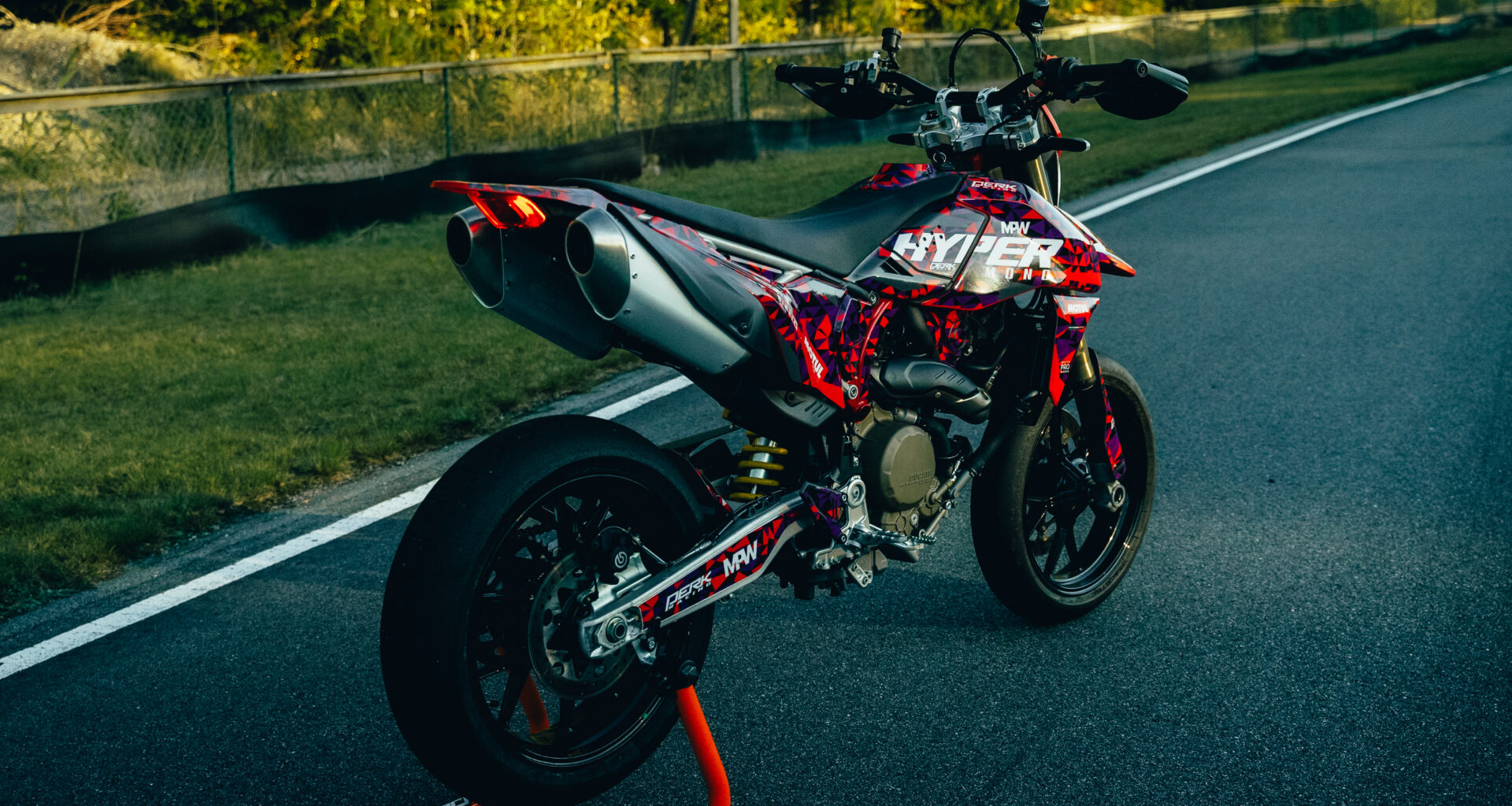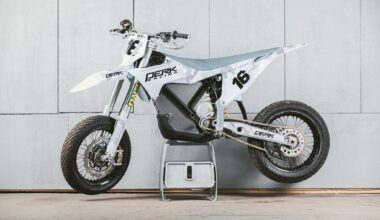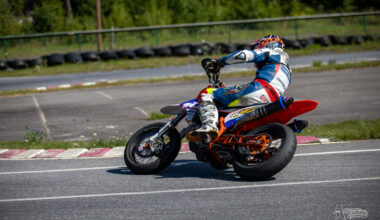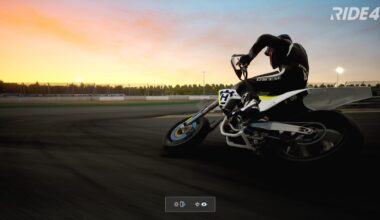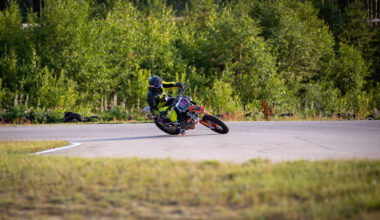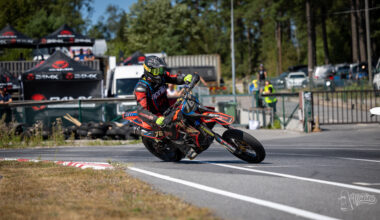Earlier this spring, Ducati announced their new single-cylinder engine in a smaller sibling to the Hypermotard, the Hypermotard 698. After putting some miles on both the road and the track with the 698, it’s now time to share what we’ve learned. This was supposed to be a brief comparison earlier this summer, but after riding the bike on several trackdays, a desire emerged to make the bike just a bit better.
We can start by addressing some teething issues, something you have to be prepared for with a new model. On our bike, the rubber bushings in the handlebar mounts were too soft. They were so soft that you could feel the handlebar move forward just by braking into an intersection. Ducati has a solution involving a spacer replacement in the triple clamp, but we decided to equip the Hypermotard with an upper triple clamp which doesn’t use rubber mounts for the handlebar at all but rather fixed mounts. This also results in a more distinct steering.
We’ve seen a few people online experiencing oil leaks from the engine, but most seem satisfied with their Hypermotard.
Let´s we dive into the actual comparison and start by looking at the chassis measurements for the Hypermotard 698 and the 690 SMC-R. To do this, we´ve used a software, MotoSpec, in which we have measured both bikes.
We’ll set up some values in a table to visualize some of the differences (measurements in parentheses are specs found online).
| HYM 698 | 690 SMC-R | ||
| Rake | 24,7degrees (26,1) | 26,8degrees (27) | |
| Wheelbase | 1441mm (1443mm) | 1506mm (1480mm) | |
| Trail | 102,7mm | 118,3mm | |
| Weight (as specified by the manuf.) | 151kg | 150kg | |
| Power (as specified by the manuf.) | 77,5hp/63Nm | 74hp/73,5Nm | |
The first thing we´ll focus on is the fork angle, rake. The 698 has a steeper fork angle than the 690. A steeper fork angle is more advantageous for bikes designed for quicker steering. The 698 is also shorter by 3.7–6.5 cm (depending on chain length, etc.), which reinforces our view that this bike is built to be agile and responsive. The weight is similar on both the 698 and 690, so there’s no clear advantage in terms of hp/kg.
The final measurement we look at is the trail. A long trail gives a stable and confident behavior, while a short trail allows for quicker steering but can sometimes feel twitchy. However, neither of these bikes is overly sluggish or nervous to ride.
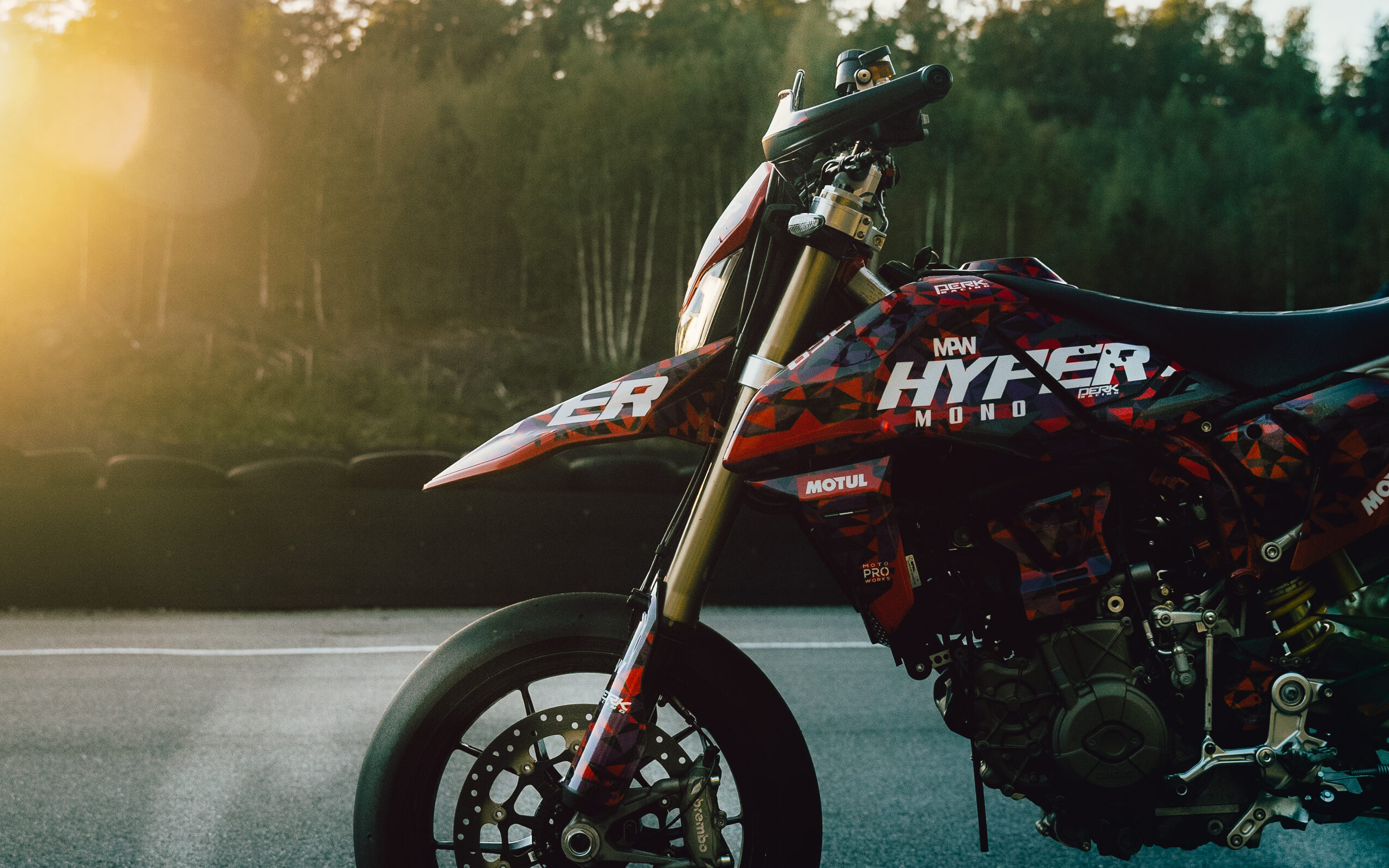
Photo: @patriknordstrm
To get a better understanding of the differences between the 698 and the 690, we took both bikes out on the road. Johan Altzar from Dala MC workshop joined us as a sounding board and brought along his personal 690 SMC-R.
On the narrow, winding roads around Borlänge, both bikes are very enjoyable to ride. There’s no doubt that the 690’s engine delivers its power with a rougher character. We should also keep in mind that Johan has tuned his engine somewhat. A different camshaft and mapping have increased the power, so comparing these particular two models isn’t entirely fair. But we have done a bit of riding on stock 690´s aswell over the years so that engine isn´t unfamiliar to us. The 690’s torque and shorter powerband invites you to use a more playful riding style, hooning if you will. However, after switching from the 698 to the 690, it felt like you´ve barely started accelerating before you´re hitting the rev limiter, in every gear, on every straight.
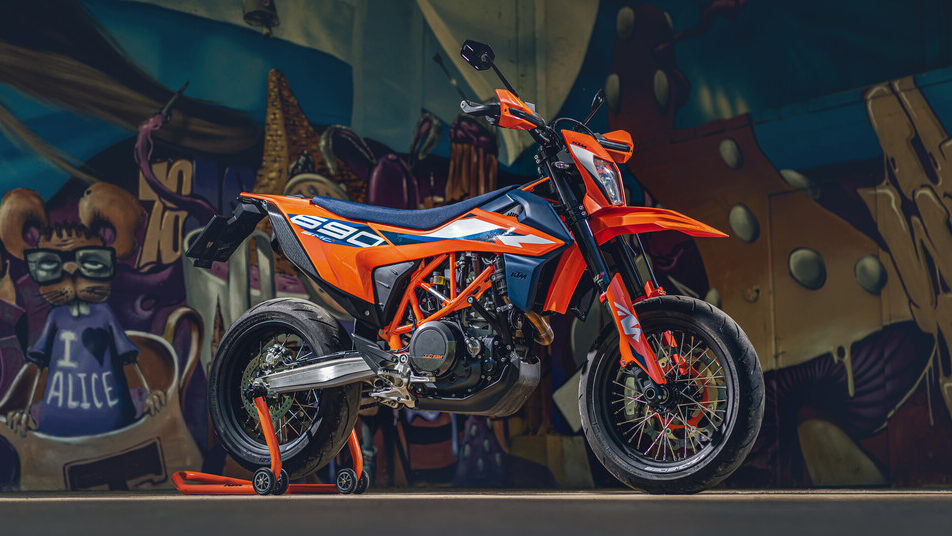
The 698, on the other hand, has a smoother performance right from bottom of the revs. It pulls from the bottom even in high gears without it feeling like you’re riding a tractor, and it revs all the way up to 10,250 rpm compared to the 690’s 9,000 rpm. The 698 also has significantly less vibrations. If you ride the 690 at higher revs, as you would on twisty roads, chances are that you’ll feel a tingling in your fingers at the next ice cream stop. The 698’s smoother operation didn´t affect our hands at all.
Those of you who’ve ridden the 690 know it’s a stable bike. There are no surprises in that chassie unless, of course, you as the rider create them. Back when the 690 started being used on larger tracks, many sport bike riders had a hard time realizing that a supermoto could take any line it wanted and still make it through the curve.
We’d argue that the 698 is the next step in that evolution. This is a supermoto that wants to turn, even though it can still be improved.
To learn what this bike has to offer, we booked two days at Gelleråsen together with Actionpics. The manual provides basic suspension settings depending on whether you want to ride on the road or the track, tailored for a rider weighing in at 80-90 kg. Since we had done some minor testing of the bike earlier at the track at Gröndal, we knew that the front suspension needed to be a bit tighter in rebound and compression damping than what the manual suggests.
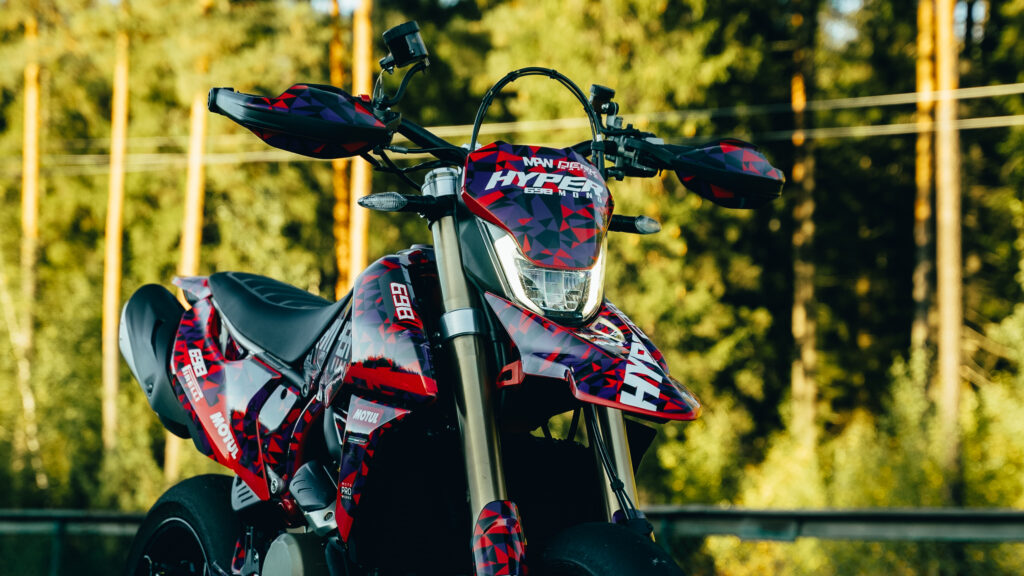
Photo: @patriknordstrm
It’s very clear from the moment you roll out onto the track that the suspension is soft. My 90 kg (+ gear) is just a bit more than what the manual specifies that the suspension is designed for. But let’s just say that the rider sag was significantly more than expected, causing the bike to wallow out of corners. We adjusted the rear preload from the specified 14 mm to about 20 mm over the two days, but it still wasn’t enough, the spring is simply too soft for my weight.
To adjust compression and rebound damping on both the shock and the front fork, there are knobs. Nothing unusual there, but they are continuous, meaning you can’t count 8 clicks out—you count 4 full turns instead. According to the manual, the rear compression should be set at 0.5 turns out. By the last session on the second day, we had gradually tightened it to try to eliminate the wallowing, down to about 1/12 turn out from fully closed, and the bike still wallowed.
The suspension is the weakest point of this bike. Some riders say they have no issues with the suspension, but they seem to be riders under 80 kg.
Lifting the seat and having a look at the intake into the airbox, you’ll find a small opening of 1.5 x 4 cm. At the rear of the exhaust system, there are two mufflers, each with a 1.5 cm round hole for the exhaust gases to squeeze through. Between these openings, there’s a throttle body with a 60 mm equivalent opening and an exhaust system matching the intake. The engine delivers as Ducati claims, 77 hp and 63 Nm, but there’s definitely more power to wrangle out if it. Ducati’s Termignoni system with an open air filter and mapping adds roughly 7 hp. However, this is still a homologated, street-legal system. So, there should be more potential if you’re aiming for track use or maybe racing in the supermono series.
We modified the original airbox cover, and we’re waiting for a solution to remap the 698. This would allow it to breathe easier, and we’d likely see very different power figures as a result.
During our track time at Gelleråsen, we had a 690 Duke in our group, giving us the chance to compare performance down the straight. The Hypermotard is a bit stronger than the Duke, as you can see in the video.
After spending two days on the track and confirming that the suspension needed some upgrades, we reached out to our minion, Mattias Engbom at Eng Racing. After some discussion and planning, we agreed on an approach. The shock absorber needed the most help to improve function, so Mattias ordered an 80 N/mm spring to replace the standard 70 N/mm. He also adjusted the shimstack for better track performance.
For the front, the plan was to replace the spring and possibly the oil, but it turned out that the fork used unusually small springs, which we couldn’t get in time, so we settled for a slightly thicker oil. There’s still room for improvement in the fork, but it works adequately for a track bike.
To further enhance the bike’s handling on the track, we installed a new linkage. All these mods now mean that we have a bike that exits corners without wallowing, and as a bonus, we have more grip when rolling on the throttle. There’s still some fine-tuning to be done with the spring; perhaps we’ll try a 75 N/mm spring or an 85 N/mm spring with less preload?
The standard triple clamp on the 698 has a 34 mm offset while the 690 has an adjustable triple clamp with a 30–32 mm offset. Offset affects the trail, and as we’ve seen, the 698 has less trail than the 690, 102,7mm vs 118,3mm. This doesn’t mean the bike is unstable, but the handlebar does feel a bit too active under intense riding—not wobbling, but rather swaying. So, we installed a new triple clamp with a 32 mm offset. It’s only been tested on a go-kart track so far, but we’re optimistic about the change.
The footpegs on the 698 have almost no grip at all. When you are trying to put pressure on the pegs in corners, you quickly realize it’s nearly impossible without slipping. The footpegs are also mounted really low, which means that they touch the tarmac earlier than expected. There are race fottpeg kits out there, like the one from Woodcraft, but that wasn´t on our priority list for this year.
Both bikes have comparable brakes from Brembo. They’re not the best of brakes, but they’re not bad either. For the track sessions on the 698, we chose to install SBS DS-1 pads.
We can’t imagine Ducati built their 698 for any reason other than to be better than KTM on their home turf. So, have they succeeded?
Let’s make a quick pros and cons list to compare the two.
| Ducati 698 | KTM 690 | ||
| + | – | + | – |
| Smooth engine | Soft suspension | Aggresive engine | Vibrations |
| 10250 rpm | no traction on pegs | Suspension | low rpm limit |
| Ergonomics | Everyone has one? | ||
| New kid on the block | |||
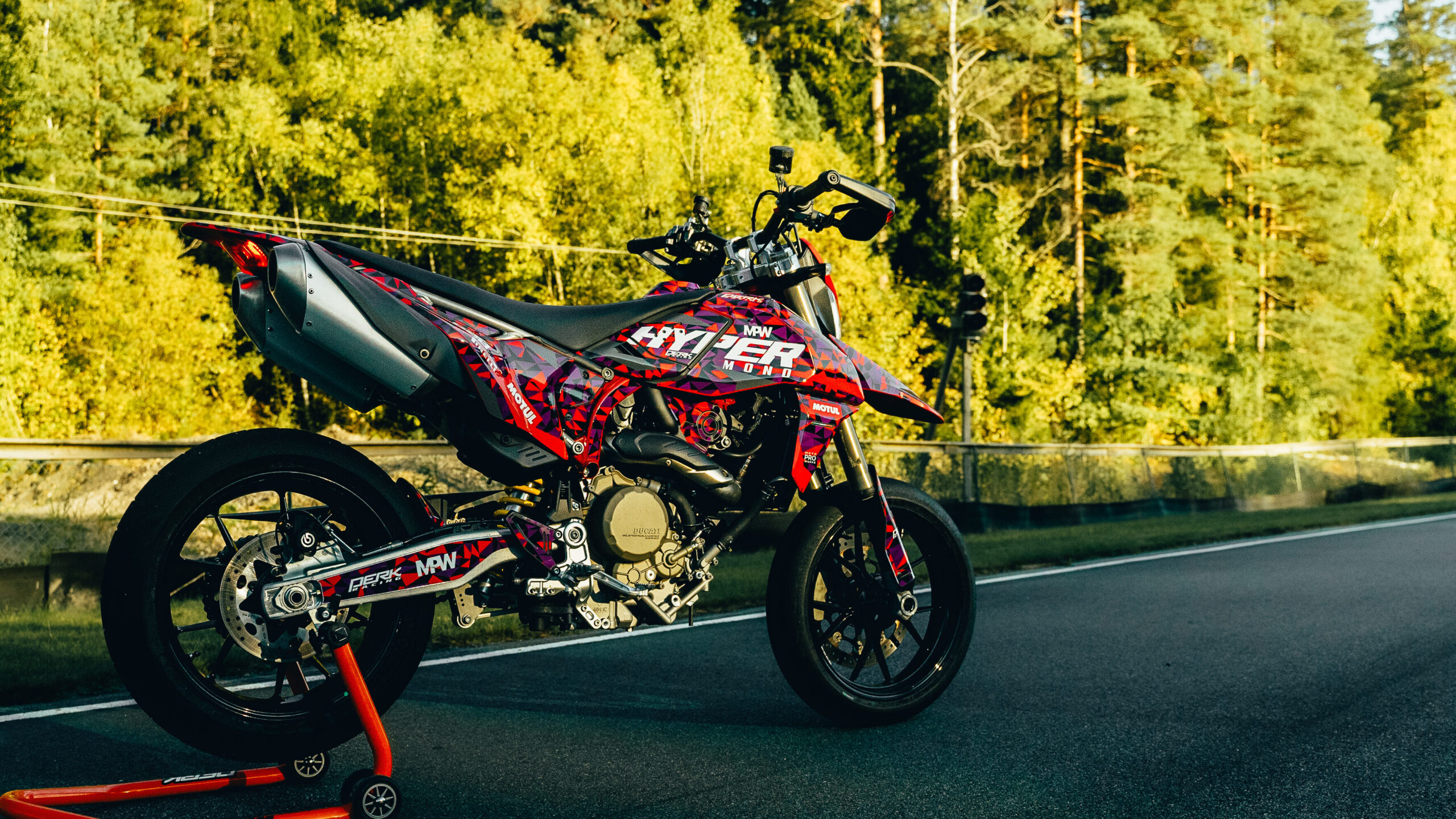
Photo: @patriknordstrm with decals from MotoProWorks, triple clamps and linkage from Perk Racing.
But the question remains: which bike is the better one? In our opinion, it’s entirely possible to make the 698 the better bike. However, that requires purchasing the linkages, triple clamp, and upgrading the suspension—an investment of somwhere around 1400-1600 EUR.
If you’re buying a bike to compete in supermono, the 698 is a better starting point since you’d likely want to invest in better suspension and footpegs anyway. But if you’re looking for a bike to ride around and enjoy on the street, with the occasional track day, the 690 is a better buy.
However, if Ducati were to release an SP version of the 698, then there would probably be no reason to choose the 690.
This post is also available in: Svenska

